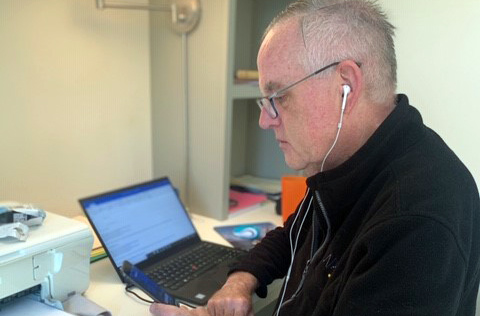Penn Medicine Marks One Millionth Telemedicine Visit Since Start of COVID-19 Pandemic
PHILADELPHIA: From video and telephone visits to remote blood pressure and oxygen-evel monitoring to apps providing real-time virtual support to COVID-19 patients, Penn Medicine has deployed an array of tools to provide telemedical care to its patients during the COVID-19 pandemic. After a rapid mobilization of its telemedicine infrastructure to ensure continuity of care for patients of all kinds during the hectic days of March 2020, Penn Medicine marked telemedicine visit number one million this week.
“Reaching a million telemedicine visits is an extraordinary emblem of the dedication that Penn Medicine’s clinical staff has to their patients,” said Kevin Mahoney, CEO of the University of Pennsylvania Health System. “The rapid shift toward supplementing in-person visits with telemedicine, and building innovations in real-time to ensure our capacity to safely care for all patients, is one of the most visible examples of how the people within our health system have risen to meet the challenges COVID-19 presented. Everyone here has rolled with every change and delivered the highest level of care to our patients in our facilities and in their homes, ensuring that they could count on us every day during the pandemic.”
The type of growth experienced since mid-March 2020, when a wholesale shift of appointments to telemedicine began, has been exponential. In all of 2019, for example, Penn Medicine had roughly 11,000 telemedicine visits. That means that getting to a million in just the 11 months between March 2020 and February 2021 amounts to a growth of more than 9,000 percent compared to the prior year.
“While Penn Medicine is a large enterprise spanning six hospitals, hundreds of practice locations and two states, the speed with which we transitioned from in person care to telehealth was astonishing, and speaks to the adaptability of our organization, our providers and our patients,” said C. William Hanson III, MD, Penn Medicine’s chief medical information officer. “Different aspects of our telemedicine infrastructure served everyone from the ‘worried well’ who were concerned that they might catch COVID to the most critically ill patients in our ICUs.”
At the beginning of the COVID-19 outbreak, the main thrust was to move previously scheduled and other imminent regular appointments to telemedicine visits, if possible. That included virtual check-ups in Orthopaedic Surgery for joint replacement patients and online appointments for counseling patients, such as those in the Stephen A. Cohen Military Family Clinic.
But early in the pandemic, too, many within Penn Medicine recognized coming necessities – and important opportunities – so they began implementing new programs to augment and enhance the patient experience. That included efforts in Obstetrics and Gynecology (OB/GYN) at the Hospital of the University of Pennsylvania to dispense electronic blood pressure meters to pregnant patients so that they could be monitored from home rather than coming for all in-office prenatal visits.
Other programs like these were created to directly respond to COVID. A key component of Penn Medicine’s care for COVID patients included a program called COVID Watch, which uses automated text messages to regularly touch base with COVID-positive patients who are not sick enough to be hospitalized. Anyone who experiences worsening symptoms while using the platform is immediately connected with a 24/7 live call team of nurses. Eventually, the program expanded to include monitoring using remote pulse-oximeters, allowing for even more patients to participate and avoid hospitalization. To date, more than 7,000 patients have enrolled in COVID Watch.
While the roll-out of vaccinations is providing a potential light at the end of the COVID tunnel, Penn Medicine is looking ahead to what the next million telemedicine visits will bring, now that patients and clinicians alike are calling for it to become a permanent part of the way the health system cares for patients. One example lies within the COVID Watch program itself. Researchers launched a study in the latter half of 2020 to see how its use of remote pulse-oximeters can help reduce racial disparities in care.
“While many have returned to in-person care, we believe a multitude of visits can permanently remain as telehealth experiences for the convenience of our patients,” Hanson said. “We have long been believers in telemedicine, and the necessities of the pandemic clearly demonstrated to us how useful it can be across broad swaths of the heath system. We will continue to innovate.”

